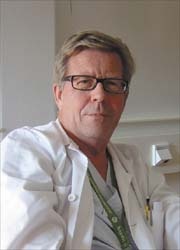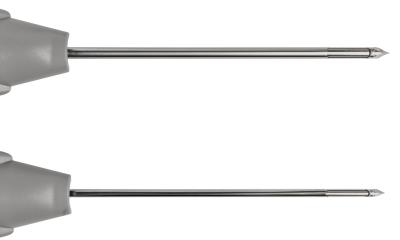Testing time for tomosynthesis
What next? A combination of ultrasound and tomosynthesis?
By Dr Ingvar Andersson

A pioneer of breast screening, Dr Ingvar Andersson, of Malmö University Hospital, Sweden, began the first randomised screening trial in 1976. These trials have continued ever since, and have confirmed that screening with mammography can reduce breast cancer mortality by between 25-30%.
Currently, Dr Andersson is working with the Siemens tomosynthesis prototype. ‘Tomosynthesis,’ he believes, ‘will become a successful screening modality. We have done some studies that have shown that its sensitivity is superior to that of digital mammography. So we expect to find more cancers, and probably in an earlier stage. Moreover, in my opinion, tomosynthesis will be even more relevant in screening than in clinical use because, in a clinical setting, we always use ultrasound, which is a very good additional modality. In screening, we are basically limited to mammographic techniques. My impression is, that tomosynthesis will provide us with further information and that it will be a valuable technique that will be implemented into the market in a couple of years. However, before that, more investigations need to be done. We know that the sensitivity is better than in today’s techniques but, for screening purposes, the specificity also plays a huge role. This means we have to do large trials under real screening conditions to see how tomosynthesis really works and how many women would be recalled for additional examinations. This figure must be low, because recalls cause anxiety and cost time and money.’
Dr Andersson adds that there is another problem to be investigated. ‘When we carry out screening today – digital or film – we do two projections for the breast, one cranial-caudal and one mediolateral oblique. With tomosynthesis, the question that arises is whether one view (the mediolateral oblique) would be enough because it is a tomographic technique. However, there some data suggesting that, by adding the cranio-caudal projection, the cancer detection rate might increase.’
To know precisely how to proceed, such things need to be proven in a series of larger trials, Dr Andersson points out. Although this has not been done at Malmö Hospital, so far, he has a concept for such a project. What is being done at Malmö is research on optimisation of the radiation dose to be delivered, the optimal angular range, number of projections and other technical factors.
And what is the future of breast cancer screening?
‘I would like to see a combination of tomosynthesis and ultrasound scanning in the same equipment. That would give us the best of both worlds.’ But, he adds: ‘Most likely it will take time before we are there.’
20.06.2007











